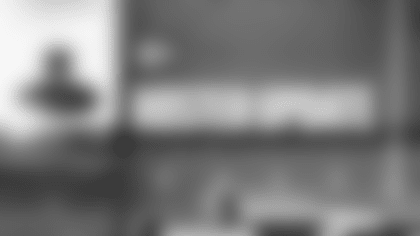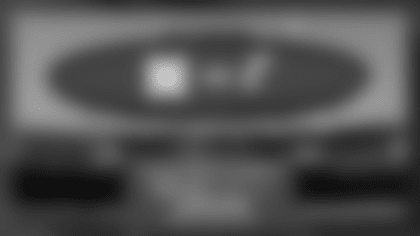Early in the spring of 1964, the AFL could take pride it was still in existence after three very difficult seasons. The New York Titans had become the Jets and under the ownership of Sonny Werblin were beginning to flourish, a number of new stadiums were in the works for the league's teams, and a TV contract had put the AFL on a competitive footing with the older NFL's broadcast deal. Still, the AFL was looking to save money. It wasn't out of the woods yet, so to speak.

In an early memorandum of March of that year the league office took a look at the expenses of its teams. Everything was covered from tickets to the cost of meals on the road down to the miniscule fees paid to the fellows who held the yard-markers on the sidelines.
For a reader born in the mid to late '40s (like, ahem, the humble author of this column), the numbers will bring a smile to your face of a time gone-by. For those born much later, there will no doubt be the occasional expression of disbelief, sort of "how could you get anybody to do this?" Like I said, you should have lived then.
In any case, take a look and draw your own conclusions:
TICKETS
Tickets for AFL games in 1964 averaged $5.68 with a high of $10.00 and a low of $4.50. The lowest priced tickets could be purchased for $1.85. The average gross revenue if the stadiums were sold to capacity was $163,650 with a high of $295,000 and a low of $85,000. The price of a ticket to the 1962 AFL championship game between the Dallas Texans and Houston Oilers was $6 bucks.

FOOTBALLS
An average of 157 game balls was used, with a high of 300 and a low of 84. Moreover, 187 autographed balls were ordered on average by each team.
TRAINERS
Five trainers were employed on a six-month basis at an average salary of $6,485, with a high of $7,500 and a low of $4,600. Three teams employed their trainers on a 12-month basis at an average of $8,572, ranging from $10,000 to $7,500. The cost of tape, bandages, and equipment used by trainers averaged $6,719 which included drugs and other medicine.
PHYSICIANS
Six clubs paid their doctors annually while two teams did not. Of those who paid, the average was $2,660 with a high of $5,000 and a low of $750. One club didn't even take its doctor on the road!
EQUIPMENT
Six equipment men were employed for only six months at an average of $4,450 with a high of $5,500 and a low of $3,000. For those teams that employed them year-round the average was $6,572 with a range of $9,000 to $4,500. As was the custom back then, and one that really continued up through the '90s, equipment men also received "gifts" from the players, the legendary "Christmas bonus" that has been popular down through the years and that still exists with "clubbies" who take care of visiting team locker rooms in baseball stadiums. Five teams had equipment men who did, while three did not. They averaged $47.50 weekly. The cost to clean uniforms averaged $21.50 per game (that's total, not per uniform!)
TALENT SCOUT
Today's teams employ as many as six full-time scouts and two to three directors and assistants of college and pro scouting. But in the AFL in 1964 the average budget for the (as in one) talent scout was $34,500, with a high of $50,000 and a low of $39,500. This included travel, by the way, but no club restricted this person's telephone expenses.
PUBLICITY DIRECTOR
Wining and dining the media was a huge part of attracting publicity for the new league. Entertainment along this line averaged $4,190, but one team had an unrestricted entertainment budget and two teams couldn't recall what they spent here.
When he wasn't pounding out something on a manual typewriter he lugged along on road trips, the PR director was expected to take the press to dinner, handle his lodging, and make sure the news hound got to the game and back again. It was that kind of time. The average bill came to $283, or less than what some of the more recent PR types (or communications directors as they are often called today) spend on a bottle of wine schmoozing the Fourth Estate.
When I assumed the position of PR director for the Chiefs back in 1989, I found invoices for the purchase of cocktail olives and dinner bills for as high as $1 thousand dollars! How times had changed.

GAME DAY: Entertainment, Programs, Merchandise, Ballboys, Clock Operator, Chain Crew
What a change from what we know today when we attend a game. These were the days not too far removed when a sign at Ebbetts Field crowed, "Hit Sign, Win Suit." Such was the state of advertising.
Net revenue from advertising and sales equaled $18,712 per team with a high of $30,000 and a low of $8,500. Programs sold for 50 cents. (Today's NFL programs have actually decreased in price and have all but disappeared with most being given away with the continuing demise of print media sales. Think the death of magazines nation-wide.) A center spread advertisement sold for an average of $2,140.
The net revenue for merchandising was, by league accounts, "negligible." The profit items were the usual we see today: tee shirts and caps, but that was about it. People did collect pennants in those days and you'll see some samples of those in the Chiefs Hall of Honor.
Four ballboys were employed per game (average $4.50 per youngster) although half the teams paid them nothing. (Such was the joy of childhood then.) The clock operator received $21.90 per game. The chain crew was paid by six teams (average of $13.25) and one team gave the fellows' two season tickets and another team nothing.
HOTELS
Interestingly, the reference here was "motels" as well. Can you imagine an NFL team staying at a "motel" today?
No solid figures were offered here but did include meals on the road where four teams provided meal money and four preferred set meals. The average meal money per diem was $9.20 and ranged between $10.00 and $9.00. You could not get some lattes for that price today! The set meal cost was between $4.50 and $5.00. Today, teams give some per diem on road trips with a late night snack and pre-game breakfast the set meals.
PRESS
Four teams took the press with them when they made road trips, and the Chiefs did so up until the late '80s. One team back then did not because the press, it said, "preferred to pay its own way" – a practice now long encouraged by an independent press. But the teams in the early '60s assumed all press expenses, three of them including entertainment and travel only. You must remember this was a league attempting to draw attention and the press (media is the preferred term today) at that time had a tendency to be less high-minded and welcomed the free travel.
As far as credentialing for the media, the teams allocated an average of 34 passes to daily newspapers with a high of 70 and a low of eight. With more media becoming Internet-based and print falling in circulation, the number of traveling press has been in decline since the dawn of the new decade. The usual number of media traveling to cover Chiefs games now averages a party of four with a couple of hundred on hand for home games (the latter representing the growth of online coverage).
TELEVISION
Television was beginning to play large dividends even in the early days of the AFL and four teams actually had their own television shows. Three of those programs were a half hour in length and one was a full 60 minutes.
SCOUTING FILM
It was a time of film not tape and the estimated cost of printing a film for a home game was $250 and for away games $319. (Today, it is almost virtually impossible to find someone who makes film, much less can develop it.)
When the game ended, or when the team returned from road games, the film director had to run out to his usual Kodak lab and hand the film over to a technician who would spend the rest of the night developing it to have ready for the coaches in the morning. Since a number of copies were needed for the various position coaches, each additional print cost an average of $130. Back then, teams employed an average of two cameras (end zone, 50-yard line), but there were a few that utilized three.
PRE-SEASON TRAINING
This was for training camp and three clubs averaged $7.50 per man for both food and lodging. Training camp as a whole averaged $25,028 per team. It cost in the '90s about $100,000 a team, not including air fare and some other charges.













